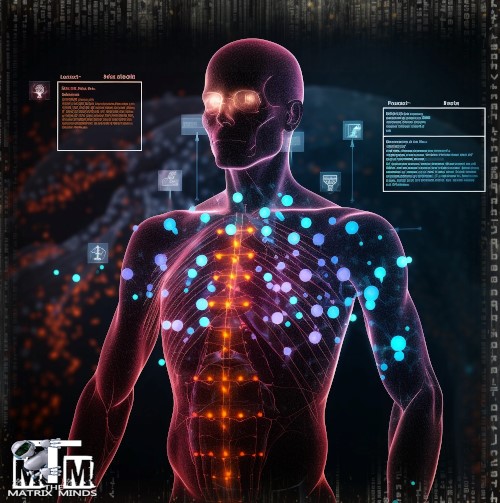Nanotechnology, the manipulation of matter on an atomic and molecular scale, has opened up unprecedented avenues in various fields, including medicine. In recent years, researchers have been exploring the potential of nanotechnology to revolutionize healthcare by enabling targeted drug delivery, precise imaging, and even tissue regeneration within the human body.

However, alongside these promises, there exists a shadowy realm of potential nefarious applications, raising ethical concerns and highlighting the need for careful regulation and oversight.
Promise of Nanotechnology in Medicine:
Nanotechnology holds immense promise in the realm of medicine. By engineering nanoparticles with specific properties, researchers can target diseased cells with unprecedented precision, minimizing side effects and enhancing the efficacy of treatments. For instance, nanocarriers can be designed to deliver chemotherapy drugs directly to cancerous tumors, sparing healthy tissues from damage. Similarly, nanoparticles can enhance imaging techniques, allowing for earlier and more accurate detection of diseases such as cancer.
Furthermore, nanotechnology offers opportunities for personalized medicine, where treatments can be tailored to an individual’s unique genetic makeup and disease profile. By leveraging nanoscale technologies, medical interventions can become increasingly precise, leading to better outcomes for patients.
Nefarious Possibilities:
Despite its immense potential for good, the use of nanotechnology in the human body also raises concerns about potential misuse and unintended consequences. One of the primary worries is the possibility of nanomaterials being used for covert surveillance or espionage. Nanoscale devices could be engineered to gather sensitive information about individuals without their knowledge, leading to violations of privacy and autonomy.
Moreover, there are fears that malicious actors could weaponize nanotechnology for harmful purposes. Nanoparticles could be designed to target specific individuals or populations, delivering toxins or pathogens with deadly efficiency. The small size of nanoparticles could also make them difficult to detect and defend against, posing a significant challenge for security and defense efforts.
Another concern is the potential for unintended health effects resulting from the interaction of nanomaterials with biological systems. While extensive research is being conducted to assess the safety of nanotechnology in medicine, there is still much that remains unknown about the long-term effects of nanoparticles within the human body. Unexpected toxicities or immune responses could arise, posing risks to patients and eroding trust in medical technologies.

Regulatory and Ethical Considerations:
Given the dual nature of nanotechnology in medicine, policymakers face the challenge of balancing innovation with safety and security. Regulatory frameworks must be established to ensure that nanomedical applications undergo rigorous testing and evaluation before being approved for clinical use. Additionally, robust oversight mechanisms are needed to monitor the ethical implications of nanotechnology and prevent its misuse for nefarious purposes.
Ethical considerations also play a crucial role in guiding the development and deployment of nanotechnology in medicine. Transparency, informed consent, and respect for individual autonomy are paramount, particularly when dealing with technologies that have the potential to impact human health and well-being. Ethical guidelines should be integrated into the design and implementation of nanomedical interventions to uphold the principles of beneficence, non-maleficence, and justice.
Nanotechnology holds great promise for revolutionizing medicine and improving patient care. However, alongside these opportunities come significant ethical and security challenges. As researchers continue to explore the potential of nanotechnology in the human body, it is essential to remain vigilant against potential misuse and to prioritize the safety, privacy, and well-being of individuals. By fostering a multidisciplinary dialogue involving scientists, policymakers, ethicists, and the public, we can harness the transformative potential of nanomedicine while mitigating its risks and ensuring responsible innovation.




Leave a Reply
Want to join the discussion?Feel free to contribute!